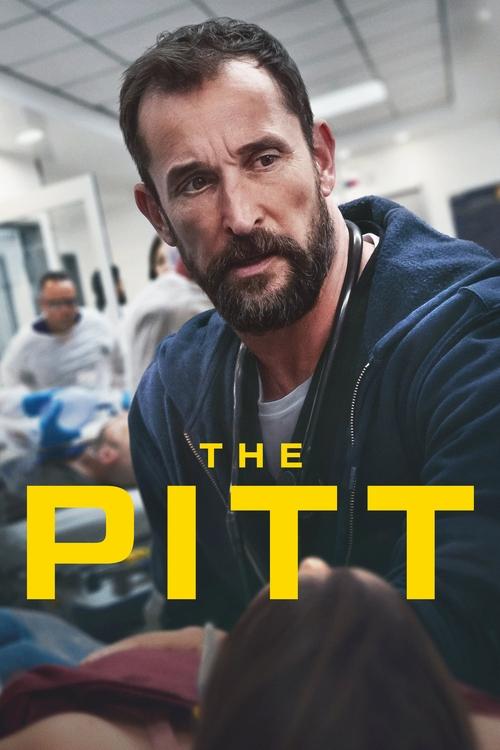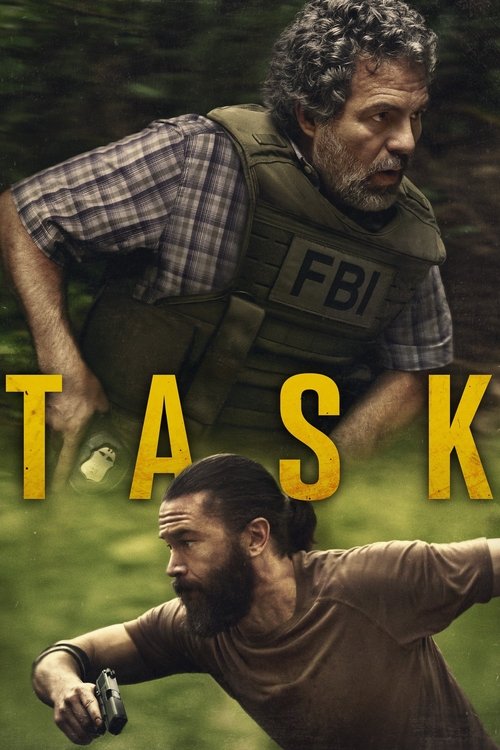
Ask Your Own Question
What is the plot?
The Pitt, Season 1, unfolds over a single 15-hour shift at the Pittsburgh Trauma Medical Center's emergency room, known as "the Pitt." The story begins with attending physician Dr. Michael "Robby" Robinavitch welcoming four newcomers: Victoria Javadi, a third-year medical student; Dennis Whitaker, a fourth-year medical student; Dr. Trinity Santos, an intern; and Dr. Melissa "Mel" King, a second-year resident. Robby, still haunted by the death of his mentor Dr. Adamson during the COVID-19 pandemic four years earlier, prepares to guide the new staff through the grueling demands of the ER.
The shift quickly escalates as the ER becomes overwhelmed with patients. The newcomers face immediate challenges: Victoria struggles with the emotional weight of patient care, Dennis encounters his first critical trauma cases, Trinity tries to keep pace with the fast-moving environment, and Mel navigates complex cases including an unvaccinated measles patient. Charge nurse Dana Evans coordinates the floor, managing bed assignments and staff tensions, while senior residents Heather Collins and Frank Langdon support Robby in maintaining order.
Early in the shift, a mystery emerges involving tampered medication, which raises alarms among the staff. Dr. Cassie McKay, a second-year resident under legal supervision with an ankle monitor, becomes involved in investigating this issue while balancing her demanding patient load. Her ankle monitor malfunctions, leading to a tense scene where she saws through it to continue working, risking arrest. This act underscores the high stakes and personal sacrifices the staff endure.
As the hours pass, the ER faces a major tragedy when a mass casualty event floods the hospital with critically injured patients. The staff must triage and treat an overwhelming number of cases simultaneously. Robby struggles with resurfacing traumatic memories of his mentor's death amid the chaos. Heather Collins, hiding a pregnancy, pushes herself to the limit, while Mel King's neurodivergence and experience with veterans add depth to her patient interactions. The junior staff are tested to their limits, with Dennis Whitaker repeatedly thrown into high-pressure situations that challenge his resolve.
Throughout the shift, interpersonal dynamics intensify. Dr. McKay attempts to reach David, a young man previously suspected of planning violence, in a poignant confrontation that highlights the emotional toll on the staff. Meanwhile, the hospital manager Gloria reopens the ER to walk-ins despite the exhaustion of the team, signaling the relentless nature of healthcare work.
In the final hours, the ER briefly experiences a moment of calm as the waiting room empties and floors are mopped. However, this peace is short-lived as the staff prepare for the next wave of patients. The season closes with the acknowledgment that the work never truly ends, and the team must continue to face the brutal realities of emergency medicine together.
This detailed progression captures every major plot point, character decision, and emotional beat of The Pitt's first season, portraying the relentless pressure and resilience of frontline healthcare workers over one intense day.
What is the ending?
Short Summary: The Pitt Season 1 finale, titled "9:00 PM," concludes with Dr. Robby Robinavitch giving a speech to his team about a mass shooting crisis. The episode wraps up major storylines while setting the stage for Season 2. Dr. McKay is released from arrest after negotiating to replace her malfunctioning ankle monitor. The staff prepares to leave their duties to the night shift, marking the end of their 15-hour shift.
Expanded Narrative:
The finale begins with the aftermath of a chaotic day at the Pittsburgh Trauma Medical Hospital, where the staff has been dealing with the influx of patients from a nearby music festival shooting. The tension is palpable as the team works tirelessly to save lives.
In the penultimate episode, Dr. McKay (Fiona Dourif) finds herself in a precarious situation when she is arrested for tampering with her ankle monitor. This cliffhanger sets the stage for the finale, where Dr. Robby (Noah Wyle) intervenes on her behalf. With the help of officers who witnessed one of their own nearly die from a bullet wound, Robby negotiates McKay's release on the condition that she replaces her monitor the next morning. This resolution is swift and tidy, allowing the focus to shift back to the hospital's operations.
As the episode progresses, the staff prepares for the transition to the night shift. Gloria (Michael Hyatt), the chief medical officer, emphasizes the importance of getting the ER back up and running after its temporary shutdown. Despite their differences, Gloria shares a moment of mutual respect with Robby, acknowledging his dedication to saving lives.
Meanwhile, Javadi, a young medical student, reflects on her challenging day. Despite fainting earlier, she shows resilience and makes progress in befriending Nurse Mateo. The two share a moment of relaxation with a post-shift beer in the park, marking a small victory in her journey to prove herself.
The nurse squad, including Perlah and Princess, continues to play a vital role in ensuring the ER runs smoothly. Their dedication is highlighted as they work alongside the doctors to provide critical care to patients.
As the 15-hour shift comes to a close, Robby delivers a poignant speech to his team. He addresses the mass shooting crisis and the emotional toll it has taken on everyone. This moment is a culmination of the season's themes, emphasizing the resilience and camaraderie among the healthcare workers.
The episode concludes with Robby and Abbott (Shawn Hatosy) leaving the hospital through a packed waiting room. The staff is exhausted but relieved as they hand over their duties to the night shift. The finale ends on a hopeful note, setting the stage for Season 2 with unanswered questions and a sense of anticipation for what lies ahead.
In terms of character fates, Dr. Robby Robinavitch remains a central figure, still grappling with PTSD but finding strength in his team. Dr. McKay is released and will likely face further challenges in the next season. Javadi is on track to prove herself as a capable medical student, and the nurse squad continues to be integral to the hospital's operations. Gloria maintains her role as chief medical officer, poised to continue her professional interactions with Robby. Overall, the finale leaves the characters in a state of transition, ready to face new challenges in the upcoming season.
Is there a post-credit scene?
There is no traditional post-credits scene in the first season of The Pitt (2025). However, the end credits of each episode--and especially the finale--are notable for their use of music and tone, which serve a narrative and emotional function similar to a post-credits scene in other series.
At the end of the Season 1 finale, after a grueling 15-hour shift, the episode closes not with a cliffhanger or a teaser, but with a quiet, reflective moment. The morning crew gathers at a park, visibly exhausted, sitting together in silence and camaraderie. The camera lingers on their faces, capturing the mix of relief, fatigue, and lingering adrenaline. They do not speak much; instead, their body language and exchanged glances convey a shared understanding of the day's chaos and the unspoken bond forged in the ER. Dr. Robby, played by Noah Wyle, eventually leaves the group and walks home alone. The sequence is understated, emphasizing the emotional and physical toll of their work, and the small, human moments of connection that sustain them.
As the credits roll, the original song "Fail Forward" plays--a vocal version debuting in this episode. The lyrics and melody are designed to echo Dr. Robby's journey through the shift, encapsulating the show's themes of perseverance, vulnerability, and the imperfect striving that defines life in the hospital. The music does not advance the plot or introduce new story elements, but it deepens the emotional resonance of the finale, allowing the audience to sit with the characters' experiences a little longer.
In summary, while there is no narrative post-credits scene with new plot developments or teases for future seasons, the finale's end credits are a deliberate, emotionally charged coda. The combination of the park scene and the original song creates a space for reflection, mirroring the characters' need to decompress and process the intensity of their work--a fitting conclusion to a season deeply invested in the inner lives of its protagonists.
What are the 5 most popular questions people ask about The Pitt, Season 1 (2025), specifically about plot elements or characters, excluding general or thematic questions?
The 5 most popular questions about specific plot elements or characters in The Pitt, Season 1 (2025), excluding general or thematic questions, are:
- How does Dr. Robby cope with the grief of losing his mentor, Dr. Adamson, throughout the season?
- What role does charge nurse Dana Evans play in managing the ER and supporting the staff?
- How do the new interns Whitaker, Javadi, and Santos develop over the course of the season?
- What is the significance of Dr. Collins' hidden pregnancy and how does it affect her work and relationships?
- What major tragedy overwhelms the hospital in the later episodes, and how does it test the characters?
These questions focus on key character arcs and pivotal plot points such as Robby's internal struggles, the dynamics among the ER staff, and critical events impacting the hospital, as detailed in episode summaries and reviews.
Is this family friendly?
The Pitt, Season 1 (2025), is not family friendly and contains several potentially upsetting scenes for children or sensitive viewers. It is a gritty, realistic medical drama set in an overcrowded hospital, depicting graphic medical procedures and intense situations.
Potentially objectionable or upsetting aspects include:
- Graphic medical content such as close-up views of severe injuries, including a degloved leg (where skin and tissue are peeled away from muscle) and amputations.
- Frequent scenes of blood, emergency surgeries, intubations, and codes (life-saving resuscitations).
- Emotional distress involving patients, including children, and family grief.
- Realistic portrayals of suffering, death, and the mental toll on medical staff.
- Some scenes may be intense or disturbing due to the unflinching depiction of trauma and medical emergencies.
The show's commitment to medical accuracy means it does not shy away from showing the harsh realities of hospital life, which can be quite graphic and emotionally heavy.






























